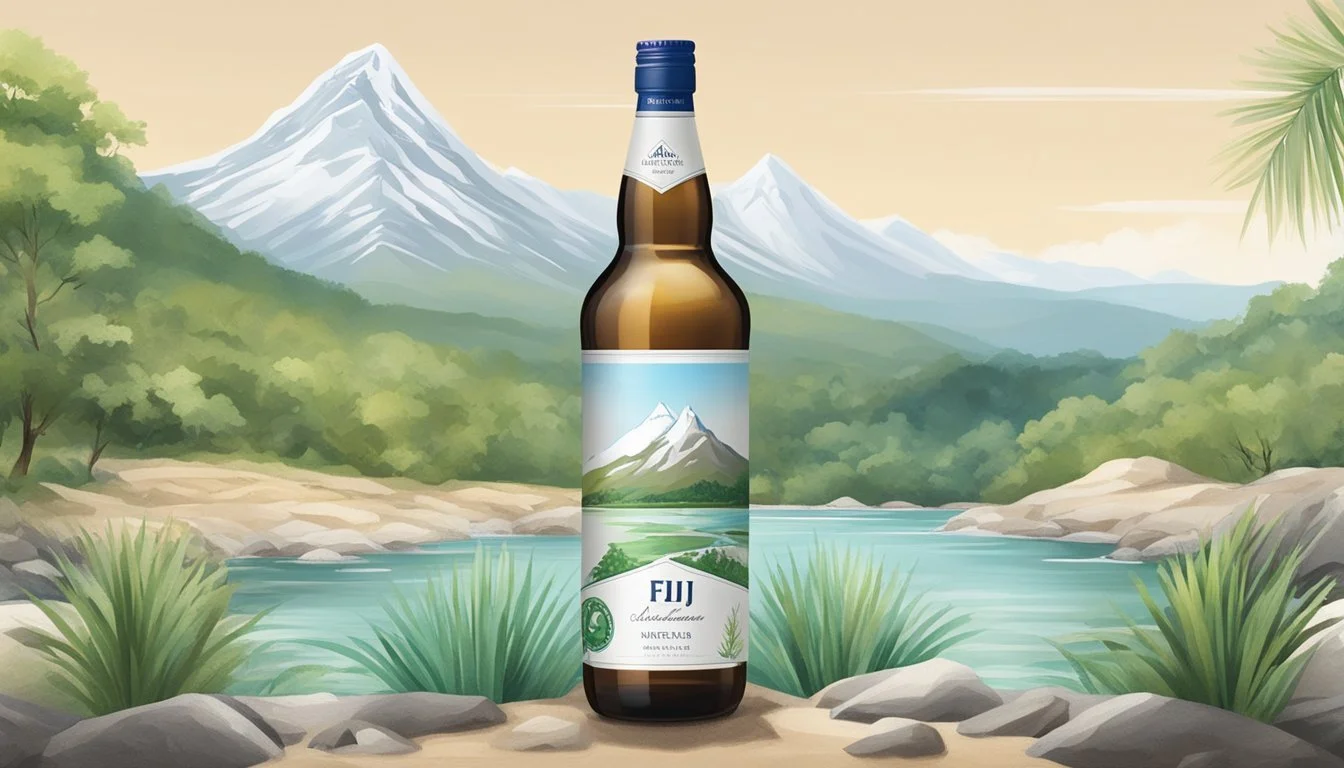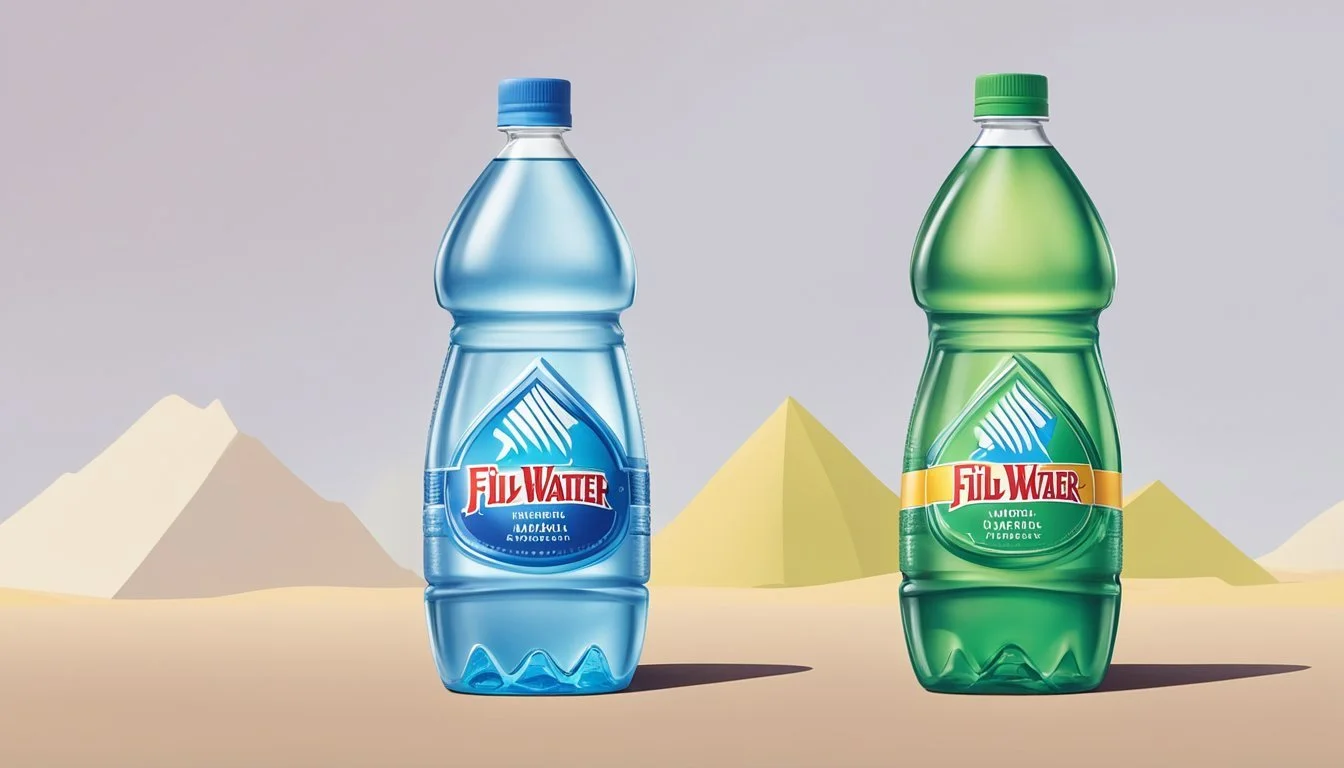Arrowhead vs. Fiji
Comparing Quality and Taste in Bottled Water Brands
Choosing the right bottled water can be more than a matter of taste; it often reflects individual concerns about water source, purification processes, and environmental impact. Bottled water brands like Arrowhead and FIJI have carved out distinct identities in a crowded market, each with its own selling points.
Arrowhead, sourced from mountain springs in the western United States and Canada, positions itself as a provider of naturally sourced spring water. Its affordability and regional origin appeal to consumers who prioritize a balance of quality and value. On the other hand, FIJI Water distinguishes itself through its tropical source and image of luxury. Sourced from an aquifer in the Fiji Islands, its water is naturally filtered and boasts a unique mineral profile that contributes to its soft mouthfeel and taste.
The comparison of Arrowhead and FIJI extends beyond personal taste preferences to considerations of environmental policies, packaging, and brand transparency. Consumers look at the overall commitment of a brand to sustainability and ethical practices while making their selection. In the landscape of bottled water, each brand tells a different story, competes on varying benchmarks, and aims to cater to specific segments of the market.
Understanding Bottled Water
In examining the world of bottled water, consumers confront a diverse spectrum of options and regulatory standards. It's vital to understand what exactly bottled water is, the various categories available, as well as the regulatory frameworks ensuring its safety and quality.
What is Bottled Water?
Bottled water is water that has been packaged in plastic or glass bottles for consumer use. It is typically sourced from underground aquifers, springs, or it may be tap water that has undergone a filtration process. Various brands like Arrowhead and FIJI distinguish themselves through their source and the mineral content of their water.
Categories of Bottled Water
There are distinct categories of bottled water, each with unique characteristics:
Spring Water: Originates from a natural spring and must be collected at the spring or through a borehole tapping the underground formation.
Mineral Water: Contains not less than 250 parts per million total dissolved solids (TDS) and is defined by its constant level and relative proportions of minerals and trace elements at the source.
Purified Water: Typically originates from tap or municipal sources and undergoes purification to remove chemicals like arsenic and PFAS.
Bottled waters may have added electrolytes for taste or to enhance health benefits. Consumer Reports often evaluates and compares brands for quality and safety.
Regulation and Safety
Bottled water regulation in the United States falls under the authority of the Environmental Protection Agency (EPA):
EPA: Oversees the safety of public drinking water and sets legal limits on over 90 contaminants.
Filtration Process: Brands are often required to filter and treat the water to remove contaminants. The purity of the water is crucial, especially to eliminate possible substances like BPA, a chemical found in some plastics.
pH Levels and Minerals: The EPA provides guidelines on pH levels and mineral content, ensuring the product is safe for consumption.
The safety of bottled water is a primary concern, and brands must comply with strict standards to ensure their products are free from contaminants and are safe to drink.
Comparing Bottle Brands
In the bottled water market, Arrowhead and Fiji Water emerge as notable brands. Each brings a unique profile and customer experience that sets them apart from competitors like Evian, Dasani, and others.
Arrowhead's Reputation
Arrowhead, known for sourcing its water from mountain springs across the western United States and Canada, carries a reputation for being a cost-effective and widely distributed brand. The company, under Nestlé Waters, can be found in numerous locations from grocery stores to vending machines, making it highly accessible for consumers seeking hydration without a hit to the wallet.
Fiji Water's Image
Fiji Water, in contrast, is often perceived as a premium product. Its artesian water, sourced from the islands of Fiji, is touted for its unique mineral composition and clean taste. The brand's square bottle and tropical imagery convey a sense of luxury and exoticism, and the company's marketing often emphasizes purity and natural artesian water sources, setting it apart from competitors like Pure Life or Aquafina.
Consumer Perceptions
Consumers often have varied impressions of bottled water brands based on taste, pricing, and brand messaging. While Fiji Water might be favored by those looking for an upscale experience or who prefer the taste, Arrowhead is often chosen for value and convenience. Other brands like Smartwater and Evian are preferred by some consumers for their unique filtration processes and mineral content. However, brands such as Dasani and Nestlé Pure Life are sometimes critiqued for being overly processed or for lacking a distinct taste profile.
Health and Hydration
When comparing bottled water brands like Arrowhead and Fiji, health and hydration are critical aspects. Consumers often consider the electrolyte content for hydration, the pH levels for alkalinity, and the mineral content for their overall health impact.
Electrolyte Content and Hydration
Electrolytes such as sodium, potassium, calcium, and magnesium are vital for hydration as they help retain fluids and maintain body function. Arrowhead water sources from springs and contains naturally occurring electrolytes, although the exact amounts are not widely publicized. In contrast, Fiji Water is known for its high electrolyte content due to the natural filtration process through volcanic rock which enriches the water with minerals and electrolytes.
pH Levels and Alkalinity
The pH level of water can affect its taste and how it interacts with the body. Alkaline water, with a pH above 7, is often claimed to provide health benefits by reducing acidity in the body. Fiji Water has a pH level of approximately 7.7, making it naturally alkaline. Arrowhead also provides water that is slightly alkaline but may vary depending on the source.
Health Implications of Minerals
Minerals in water can have positive health implications, although the presence of heavy metals, if not filtered out correctly, can be detrimental. Fiji Water is notable for its silica content which can provide health benefits such as joint support. However, both brands ensure safe levels of minerals and abide by regulated limits for contaminants, including heavy metals, ensuring their products do not pose health risks from these substances. It is important for consumers to acknowledge that while alkaline water and mineral content can contribute to their health, these should be part of a balanced diet and lifestyle.
Environmental Impact
When evaluating the environmental impact of bottled water brands like Arrowhead and Fiji, it's crucial to consider the sustainability of the water sources and the environmental effects of bottling and packaging processes.
Water Source Sustainability
Arrowhead: Based in the United States, Arrowhead's water is advertised as "100% Mountain Spring Water." This claim suggests the brand sources its water from mountain springs, which are often seen as a sustainable and pristine source. However, the sustainability of using mountain springs as a water source depends on the rate of extraction relative to the natural replenishment and the ecological sensitivity of the spring's location. A lawsuit alleges that Arrowhead's labeling may not fully represent the actual source of the water, which raises questions about its claims of sustainability.
Fiji: Fiji water is sourced from an aquifer in the remote Yaqara Valley of Viti Levu, one of Fiji's two main islands. The company proclaims that the water is drawn from an underground source that is naturally protected from external elements. However, the transport of this product from the Fijian islands to global markets has a significant carbon footprint. Transport involves the use of fossil fuels to ship water across vast distances, which leads to greenhouse gas emissions and contributes to climate change.
Bottling Process and Packaging
Arrowhead: Arrowhead uses both plastic and glass bottles for their water. While glass bottles can be more easily recycled and have a lower chemical leaching potential, the increased weight adds to transportation emissions. Plastic bottles, often containing BPA, contribute to pollution and can take hundreds of years to decompose. Any use of plastics raises concerns about environmental health and safety.
Fiji: Fiji Water is primarily distributed in plastic bottles. Though the company has made efforts to reduce packaging materials and has introduced a resealable cap that uses less plastic, the issue of plastic waste remains poignant. Plastic bottles can contribute to oceanic and terrestrial pollution, particularly if not disposed of properly. The brand's choice to use plastic, a material that is convenient for consumers but contributes to long-term environmental degradation, reflects a complex trade-off between consumer demand and environmental stewardship.
Both Arrowhead and Fiji face challenges and scrutiny regarding the environmental impacts of their operations, from the sustainability of their sources to the consequences of their packaging choices.
Water Taste and Aesthetics
When comparing Arrowhead and Fiji bottled waters, consumers often discuss their preferences in terms of water taste and the overall aesthetics of the product.
The Role of Minerals in Taste
Minerals play a crucial role in the flavor profile of bottled water. Fiji water is known for its smooth taste, which comes from the natural minerals dissolved in the water, such as silica and electrolytes. Arrowhead, sourced from mountain springs, also contains minerals, but the concentration and composition can affect its taste differently.
Blind Taste Tests
In blind taste tests, such as one conducted by The California Aggie, individuals rate water without brand biases. Fiji frequently ranks high for its taste, described often as pure and refreshing. Conversely, Arrowhead, while having its own following, may be perceived as more average in comparison, lacking the distinctive profile of Fiji.
Consumer Preference
Consumer preference can be influenced by the perceived quality of water taste, which is often linked to mineral content. Fiji has built customer loyalty around its soft taste, and aesthetic appeal—its square bottle is distinctive and recognized for luxury. Arrowhead's taste and packaging are more familiar and less polarizing, making it a reliable choice for daily hydration. Here's a brief glance at both brands' attributes:
Feature Fiji Water Arrowhead Water Taste Smooth, silky, refreshing Average, unexceptional Minerals High silica content, electrolytes Varies, mountain spring sources Aesthetics Square bottle, tropical branding Standard bottle, traditional branding
Brand Strategies and Consumer Trust
In the bottled water industry, brand strategies and consumer trust are crucial determinants of success. Companies like Nestlé, which owns Arrowhead, and The Wonderful Company, which owns Fiji, leverage distinctive marketing tactics and corporate responsibility initiatives to build and maintain consumer loyalty.
Marketing and Brand Positioning
Arrowhead and Fiji Water have positioned themselves distinctly within the market. Nestlé's Arrowhead promotes itself as a provider of mountain spring water, sourcing from springs across the western U.S. and Canada. Contrastingly, Fiji focuses on the exotic origins and purity of its water, securing exclusive rights to Fijian aquifers. Both companies invest in clear branding—Arrowhead emphasizes regional heritage while Fiji sells a premium “untouched” experience.
Transparency and Corporate Responsibility
In terms of transparency and corporate responsibility, these companies vary. Experts note that Fiji Water has faced criticism over environmental concerns, given Fiji’s remote location and the carbon footprint of shipping water internationally. Despite this, the brand has invested in sustainability programs and contributed to water access initiatives in Fiji. Arrowhead, as part of Nestlé Waters, showcases initiatives for responsible water stewardship, yet has faced scrutiny from investigative journalists over spring water sources and their impacts on local environments.
Consumer Advocacy Reports
Consumer Reports and entities like the International Bottled Water Association set forth standards aiming to protect consumers. These reports often influence trust levels as they reveal insights into product quality and corporate malfeasance. While neither Arrowhead nor Fiji has been exempt from criticism, consumers tend to rely on such reports and expert analysis for making informed decisions. Consumer advocacy groups continue to press companies for greater transparency and accountability in the industry.






